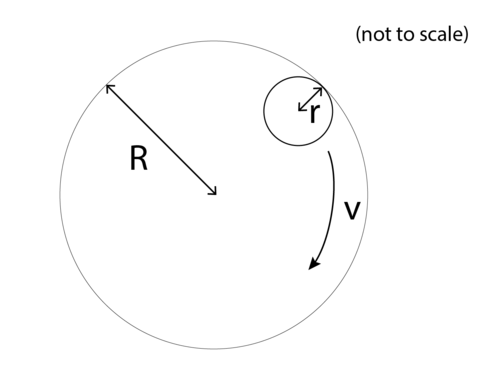Circular Motion #5
 A sphere of mass
, radius
moves in a circle with constant speed
, always touching the inner surface of a fixed hollow cylinder with radius
. The top view of the system is shown. All surfaces are smooth. If the magnitude of the normal reaction (in Newtons) exerted by the cylinder on the sphere is
where
and
are co-prime positive integers, what is
?
A sphere of mass
, radius
moves in a circle with constant speed
, always touching the inner surface of a fixed hollow cylinder with radius
. The top view of the system is shown. All surfaces are smooth. If the magnitude of the normal reaction (in Newtons) exerted by the cylinder on the sphere is
where
and
are co-prime positive integers, what is
?
This problem is part of the set - Circular Motion Practice
The answer is 10.
This section requires Javascript.
You are seeing this because something didn't load right. We suggest you, (a) try
refreshing the page, (b) enabling javascript if it is disabled on your browser and,
finally, (c)
loading the
non-javascript version of this page
. We're sorry about the hassle.
Drawing free body diagram, (in the frame of moving sphere), Forces acting on the sphere are Normal reaction perpendicular to the circle at the point of contact (passing through centre) and Centrifugal pseudoforce mv^2/(R-r) (We are considering motion of centre of mass) Equate the forces, we get the answer